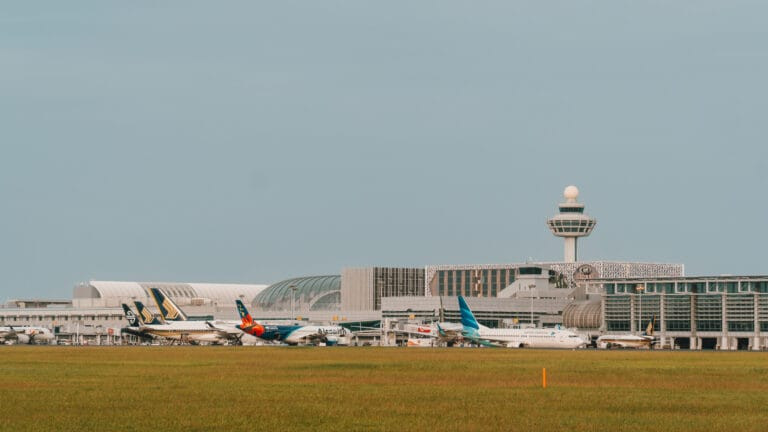Singapore Changi Airport recorded solid growth in its airfreight operations during the second quarter of 2025, defying global trade uncertainties and reinforcing its role as a key cargo hub in the Asia-Pacific region. From April to June, Changi handled 516,000 tonnes of airfreight throughput, a 6.2 percent increase compared to the same period last year.
This performance marks a positive trend for the airport’s cargo division, which continues to experience broad-based growth across all major cargo flows. Imports led the surge, posting an 8 percent year-on-year rise—highlighting Singapore’s resilience in international supply chains, even as geopolitical tensions and economic fragmentation continue to affect global trade.
Growth Driven by Key Markets and Diversified Cargo Flows
Changi Airport’s top five air cargo markets for the quarter were China, the United States of America, Hong Kong, Australia, and India. This market spread reflects a balanced portfolio of trade partners, enabling the airport to cushion against volatility in any single corridor.
China remained the largest cargo partner, with both import and export volumes showing healthy increases. The United States, while affected by shifting consumer demand patterns, remained a crucial long-haul trade route—particularly for high-value and time-sensitive goods. Meanwhile, Hong Kong, long seen as a bellwether for regional airfreight trends, also showed signs of recovery.
Changi’s cargo growth is particularly noteworthy given the broader context of global trade uncertainty. Inventory overhangs in major economies, uneven recovery in manufacturing output, and inflationary pressures in logistics costs have created headwinds for cargo operators worldwide. Yet Changi’s ability to post gains across all segments underscores its operational flexibility and strong relationships with major freight carriers.
Strategic Focus on Cargo Resilience and Innovation
Mr Lim Ching Kiat, executive vice president for air hub and cargo development at Changi Airport Group, attributed this quarter’s performance to strategic efforts aimed at building a more resilient and efficient cargo ecosystem.
“We continue to see healthy growth in cargo movements this quarter, with imports leading the way. This reflects Changi’s ability to adapt to market needs and maintain strong ties with our freight partners,” said Mr Lim. “In today’s unpredictable trade environment, maintaining end-to-end visibility and operational flexibility is critical.”
To that end, Changi Airport has been actively investing in digitalisation and automation. This includes trials of AI-driven cargo processing systems, expanded temperature-controlled zones for pharmaceutical logistics, and improved infrastructure to support multimodal freight movement.
The airport’s participation in global innovation initiatives—such as IATA’s One Record programme—positions it to align with emerging international standards around cargo data interoperability and paperless trade.
Expanding Cargo Networks to Support Regional and Global Trade
Changi’s airfreight growth is further supported by its continually expanding airline network. As of 1 July, more than 100 airlines operate over 7,200 weekly scheduled flights at the airport, connecting Singapore to around 170 cities in 50 countries and territories.
Recent additions, such as Scoot’s new Southeast Asian routes and non-stop service to Vienna, strengthen bellyhold cargo capacity and enhance the flexibility of supply chains using Singapore as a distribution hub.
These network developments are especially critical for small and medium-sized enterprises (SMEs) and industries dependent on rapid delivery—such as electronics, perishables, and pharmaceuticals—which rely on reliable and timely cargo solutions.
Terminal Optimisation Enhances Cargo Efficiency
Operational changes across Changi’s terminals are also contributing to improved cargo handling. Starting in July, several airlines—including Myanmar National Airlines, Myanmar Airways International, Philippine Airlines, and T’Way Air—will relocate to Terminal 2. These changes aim to balance passenger and belly cargo volumes more effectively, improving turnaround times and ground handling efficiency.
A Strong Outlook Grounded in Strategy and Partnership
While the global air cargo industry remains vulnerable to economic cycles, regulatory changes, and shifting trade dynamics, Changi Airport’s Q2 2025 cargo performance reflects the strength of its long-term strategy—focused on adaptability, digital transformation, and stakeholder collaboration.
The strong showing in import volumes reaffirms Singapore’s role as a strategic gateway to Southeast Asia and a critical node in global trade networks.
As Mr Lim summed up:
“Together with our partners, we aim to not just move goods efficiently, but to anticipate shifts in the cargo landscape and build a network that is future-ready.”
With the second half of 2025 now underway, Changi’s ability to maintain momentum will hinge on continued innovation, infrastructure readiness, and its commitment to meeting the evolving needs of the global logistics community.





